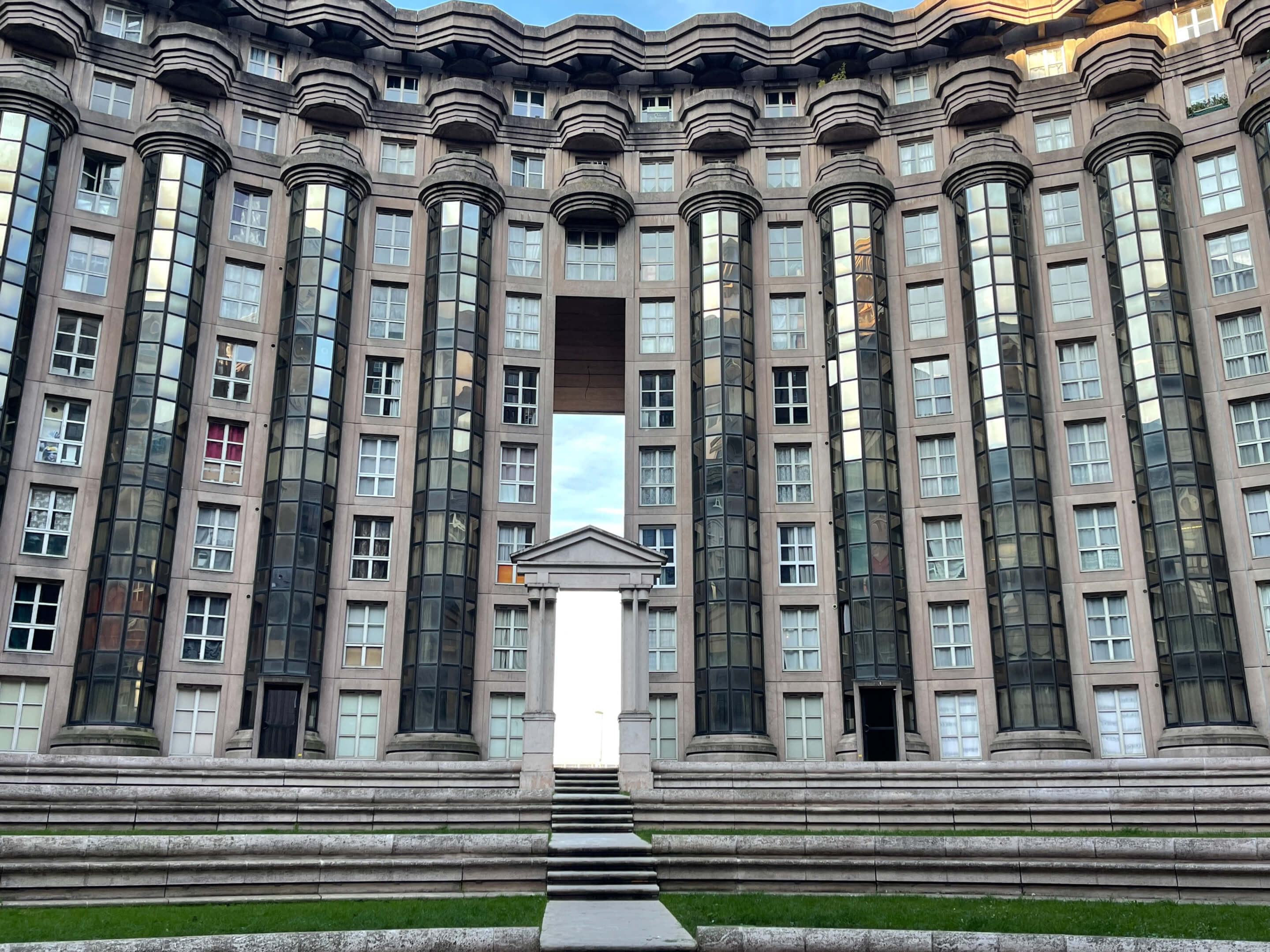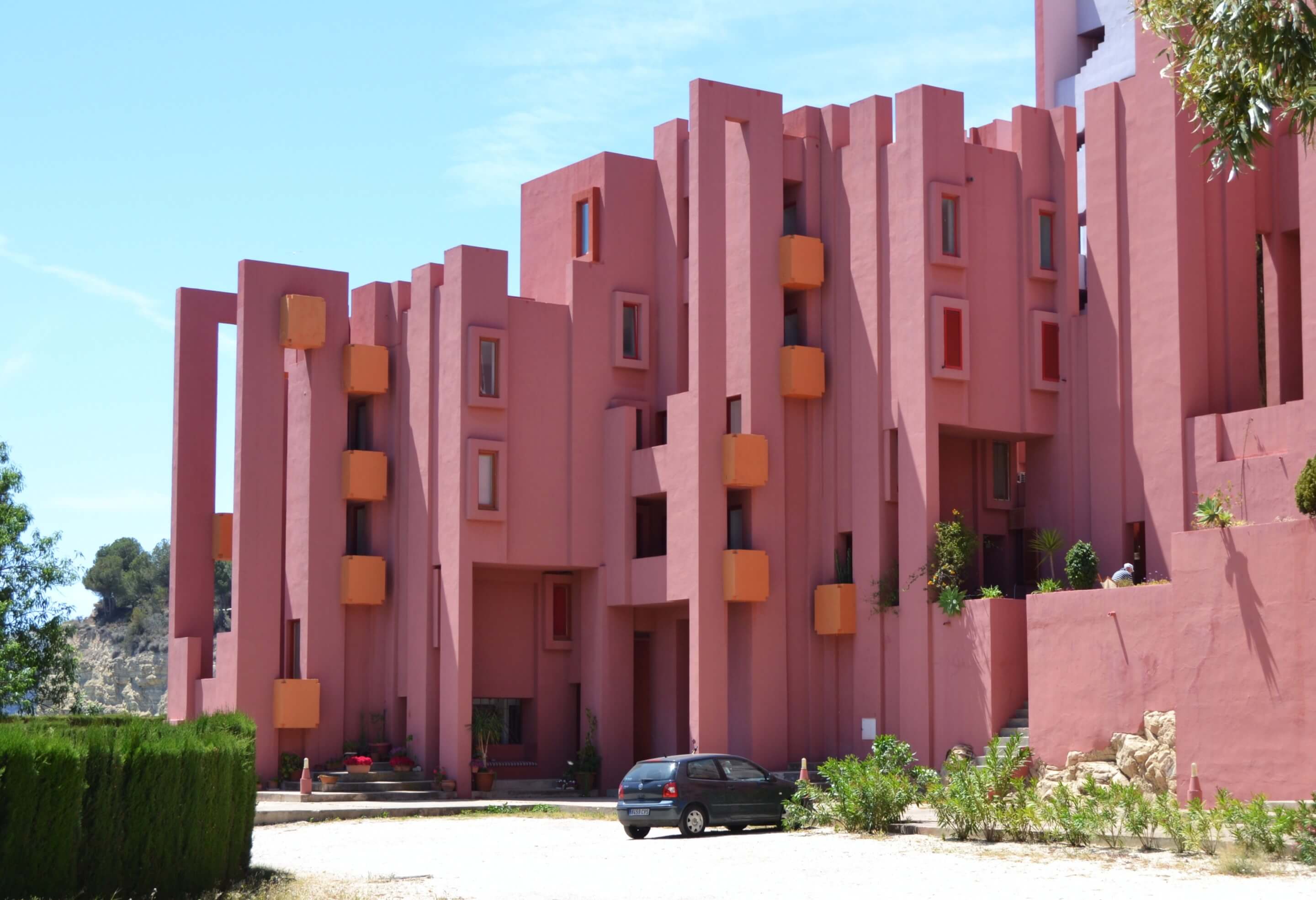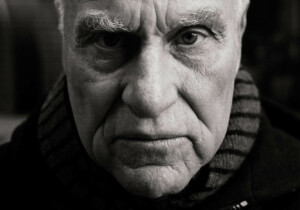Freedom is incompatible with love. A lover is always a slave.
– Germaine de Staël (1766-1817) French writer and intellectual.
Those are my principles, and if you don’t like them… well, I have others.
– Groucho Marx (1890-1977) American comedian, actor, and writer.
Ricardo Bofill always moved freely, a freedom exercised from a young age and that accompanied him throughout his life. Freedom is tricky and difficult to manage, since it implies that nothing nor anyone decides for you. Only you are responsible for your actions, your decisions and, every day, on every new project, every decision is made alone. Responsibility is never shared and therefore, one is condemned to loneliness.
Bofill perfectly embodied this freedom assumed as loneliness. His reluctance to share decisions with anyone made him an austere person, focused on work and reserved. His life was full of paradoxes and contradictions, of self-centeredness and loneliness, of successes and failures, of ups and downs and all of that could only be understood from a single idea: Freedom.
Freedom to learn
Bofill had four important pillars in his training as an architect: the family, the University of Barcelona, the University of Geneva, and being self-taught. Emilo Bofill and María Levi, his parents, were centered on Bofill after his older brother, José, passed away, and pushed him to continue the family business and become an architect like his father. The University of Barcelona gave him the first years of learning and made it easier for him to meet other architects, who, years later were colleagues, friends, and enemies. Ricardo’s expulsion from the University for his communist links and attitudes caused his departure to Switzerland, where he finished his studies.
Bofill was also an autodidactic who constantly redrew and traced works by other great architects to learn, observe and understand their architecture. To observe is discovering the differences that we have between similar realities, to understand is searching for the coincidences we find between different realities.
One day Bofill told me that the plan of a building shows the limits of architecture, but the section shows the quality of the spaces.

Freedom to work
The Taller de Arquitectura was formed around 1962-63 but was consolidated in 1964 as a result of beginning the design the Barri Gaudí in Reus. The beginning of the Taller was centered in the first years around two people: Ricardo Bofill and his first cousin Xavier Bague, but Ramón Collado, Ricardo’s foster brother and son of the Bofill family’s maid, immediately joined the team. Over time, Collado also studied architecture and finally took an active part in the projects and especially in the construction management that they carried out during the following years. Shortly after, Manolo Núñez Yanowsky (1942-) joined, a great sketcher with a background in theater capable of imitating the style of any painter. He was introduced to Bofill and Bague by Catalan theater designer and director Fabià Puigserver. The membership of Bofill and Bague in the clandestine communist party PSUC facilitated certain contacts with some Russian exiles, among whom was Núñez Yanowsky. The Taller began to grow little by little, incorporating some thinkers such as Salvador Clotas and José Agustín Goytisolo (1928-1999), a man of great culture who collaborated with his ideas and arguments.
It is during this period that Bofill met Serena Vergano and Peter Hodgkinson, both of whom have been part of the Taller to this day. Hodgkinson came to Spain from the United Kingdom where he studied architecture at the Architectural Association and where he met some members of Archigram and Team 10. His solid academic training helped his development and growth within the structure of the Taller performing a very important role in the development of the executive projects and in the realization of details, models and adding a dose of realism that facilitated the construction of the proposed ideas.
The Taller has always been structured around Bofill, with two creative pillars that formed: Núñez Yanowsky and Hodgkinson. Núñez Yanowsky was the creative, theatrical visionary and Hodgkinson redirected his histrionic ideas by imposing order, structuring them and caring for the construction. Bague and Collado were secondary but also very important.
The Taller intended to be a multidisciplinary practice around architecture, headed by Bofill. It was a community inspired by “The Factory,” which included writers, critics, mathematicians, architects, and all kinds of people who could contribute ideas to the work that was being done. But most of these collaborators ended up leaving the Taller, fighting with Bofill for his growing role and for making decisions unilaterally. The incorporation of Jean Pierre Carniaux (who joined in 1976 and opened the New York office in 1986) and the loyalty of Hodgkinson ended up with them being the definitive partners of the Taller, which ceased to be multidisciplinary and became the Ricardo Bofill firm.

Freedom to create
The Taller was founded with the clear idea of putting an end to Le Corbusier’s linear block and creating an entire neighborhood that would facilitate the relationship between neighbors and the city. He began to carry out modular and aggregative systems research that lasted about 12 years, which might be the most interesting period of his career. The projects that came out of this research—Kafka’s Castle, Red Wall, Walden 7—certainly gave him worldwide fame.
When he began to build in France, he abandoned aggregative systems to become more interested in prefabrication and postmodern architecture, which led him to become an international architect, building a skyscraper in Chicago. The last few years were focused on large interventions in neighborhoods and cities with an eclectic style and some influences from the past.
Bofill’s career has been irregular, with unexpected and often inexplicable stylistic twists. He was always ambitious and eager to grow and it is very possible that these changes were caused by the influence of fashion, changes in the scale of the projects, the available technology or the influence of his collaborators. He never justified his changes in style, he never wanted to be linked to any university, he never wanted to have followers or create any type of school; he always moved with absolute freedom without having to explain his decisions to anyone.

Personal freedom
On a personal level, he was consistent with that spirit of freedom. He was unfaithful to anyone, for instance the constant changing of partners, the focus in the Taller as well as in his private life. He had two children with two different women to end up with a third one in addition to the innumerable lovers he had, that only gives us an idea of the sexual freedom he maintained throughout his life. His political ideals had also changed throughout his life, from being a communist to building a skyscraper in Chicago’s Loop and other absolutely expensive buildings for private companies.
He was Jewish by birth, but also in love with the countries of the Maghreb, and this shows his total freedom of belief and little religiosity.
An architect focused on his work, who did not hesitate to be the center of gossip magazines when his son married the daughter of Julio Iglesias, throwing a spectacular banquet in his studio. Ricardo Bofill, a contradictory, brilliant, unfaithful, egocentric, and controversial architect, but who always has been and always will be a free spirit.











